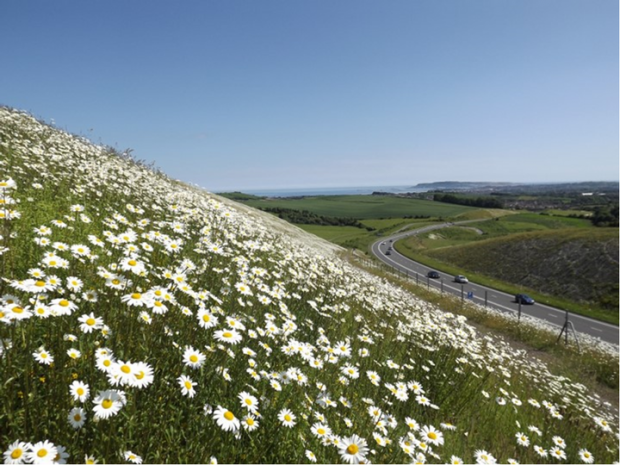By Mel Hughes, Natural England's Sustainable Development Programme Director
It was good to see the collective ambition for infrastructure finally articulated in the National Infrastructure Strategy yesterday, noting a “fairer, faster and greener” approach. You might read that strapline and consider that there are binary choices to make between them. If we want faster, does that mean we are less green? if we want fair, who is this fair for and is it therefore unfair for some? The truth is that while there are discussions to be had, we should not need to make stark choices between the things we most value. We need to shift into thinking how they interplay and what new approaches can realise all the benefits. Environmental benefits are often seen as nice-to-haves or represent legal issues to deal with late in the system which understandably puts pressure on all parties – is that unfair? it’s likely more costly. However, we know that a healthy environment underpins a healthy economy so why leave discussions late in the system or disregard foreseen impacts? Without considering the environment, we are never going to tackle the challenges of recovering nature, climate change and inequalities in health and wellbeing.
Through this strategy, we want to see a system where environmental evidence is readily accessible and understandable early in the process and that this informs route options and master plans, where to avoid impacts and how to mitigate these. We are therefore pleased to see that strategic approaches to the protection of habitats and species are highlighted - as I covered in a previous blog post - these apply as much to the provision of infrastructure as to housing. Using such approaches on large-scale and often phased developments or at strategic planning level across an infrastructure sector will be a vital new way of working. Natural England is starting discussions with many providers and sectors on this and we are keen to hear where new approaches might help.

It is still disappointing that major infrastructure projects are not required to adopt biodiversity net gain as developments under the Town & Country Planning Act (TCPA) are, but the reference to supporting net gains for biodiversity wherever possible is positive. Infrastructure developers are voluntarily setting targets for net gain and we want to offer advice and support to enable that. Large-scale government-financed projects should be exemplars.
While infrastructure in this strategy is largely focussed on the built environment, there is a recognition that green infrastructure is an essential network component. There has not been a year when that has been starker than through the Covid-19 pandemic which has shone a light on both the value of green space for health and wellbeing and the high inequalities in accessing it. We welcome the references to the green infrastructure standards that we are developing in partnership and currently piloting with local planning authorities. Going forward, we want to work with major infrastructure providers to trial these in the next tranche of trials starting in April 2021. The ambition being to see how the standards can help to target and deliver multi-functional networks that realise benefits for nature, climate, health and well-being and prosperity.
We ran a roundtable discussion for infrastructure providers last week and were heartened by the ambition and common appetite for nature’s recovery and improving benefits for local communities. The questions and the tough challenge for all remains as to how we can best put this into play – that’s where Natural England wants to focus, but we can’t do it alone.
1 comment
Comment by M Hamilton posted on
It is not disappointing but bordering on the criminal and morally irresponsible that there is no requirement to adopt biodiversity net gain, presumably due to costs and inability to deliver .The A14 in Cambridgeshire has left a huge and lasting impact with none of the legacy benefits promised with Highways England who have failed to deliver on biodiversity, carbon and provision of green space promises. There is no effective agency or department to hold such projects to account and it would appear that HS2 will be an even worse example already being one on the most negative projects in the short and long term for the environment in Europe. Creating some seeded grassland that if like other highways land in not managed appropriately is no substitute for loss of ancient habitat.